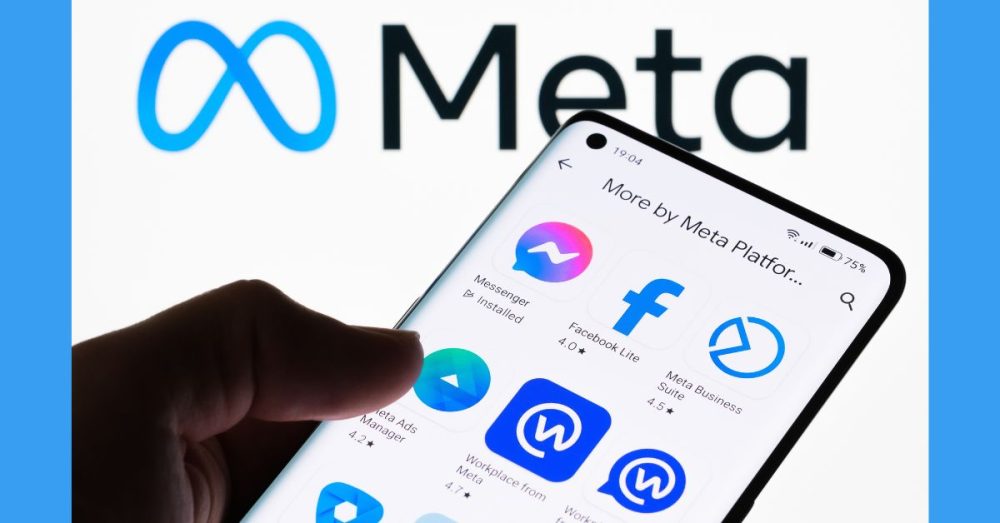
Meta is set to undertake a groundbreaking project that could reshape global internet infrastructure. The company plans to lay down a 40,000 km subsea fiber optic cable that will encircle the globe. The estimated cost of the project exceeds $10 billion, marking it as one of the largest and most ambitious undertakings by the tech giant. This cable will be the first of its kind, owned and operated exclusively by Meta, positioning the company as a major player in global telecommunications.
The cable, designed to enhance internet connectivity across multiple continents, will follow a “W” shaped route. Starting on the U.S. East Coast, it will extend through South Africa, make its way to India, continue via Australia, and finally reach the U.S. West Coast. This carefully planned path avoids geopolitical hotspots like the Red Sea, the South China Sea, Egypt, Marseille, the Malacca Strait, and Singapore, ensuring that the cable remains outside of volatile regions. This strategic route not only secures the infrastructure but also highlights Meta’s meticulous planning to mitigate potential risks related to political instability and maritime security.
Meta’s subsea cable project comes at a time when the demand for reliable and fast global internet connections is increasing rapidly. The growing need for better data capacity and more resilient internet pathways is driven by surging global data usage, increasing cloud computing needs, and expanding internet-based services. The cable will significantly boost Meta’s ability to support its vast ecosystem of applications and services, from Facebook to WhatsApp, Instagram, and more. It will also provide enhanced connectivity for businesses and consumers in the countries the cable will pass through.
This new initiative also reinforces Meta’s long-term commitment to expanding its footprint in India. The route through India complements Meta’s ongoing investments in the country, which is the world’s second-most populous nation and an emerging hub for technology innovation. Meta has been actively engaging with the Indian market for years, with CEO Mark Zuckerberg making dedicated trips and initiating various projects aimed at enhancing digital connectivity in the region. By connecting India directly to the global network, Meta strengthens its presence in the country while also boosting internet speeds and accessibility for millions of users.
The project is still in its infancy, with plans to formally announce the initiative in early 2025. Due to the complexities involved in laying a subsea cable of such magnitude, the project’s completion is expected to take several years. This delay is partly due to the limited availability of cable-laying ships and the intricate logistics involved in the installation. The subsea cable will require careful coordination between multiple stakeholders, including government agencies, international shipping lines, and local entities.
Meta’s decision to take full control over the cable’s construction and operation underscores the company’s increasing interest in managing critical infrastructure independently. Unlike past collaborations with other companies and organizations for similar projects, this initiative reflects Meta’s strategic focus on ensuring that it has more control over its internet backbone. The company has previously partnered with major tech firms like Google, Amazon, and Microsoft in building subsea cables, but this new venture signals a shift towards self-reliance in managing key communication networks.
The subsea cable will also have far-reaching implications beyond Meta’s own services. As more global companies rely on seamless, high-speed internet for their operations, Meta’s cable could become an essential part of the digital economy. By providing faster and more reliable internet connections, Meta’s infrastructure could boost business activities, education, healthcare, and other sectors across the regions it serves.
The cable is expected to carry immense data traffic, further solidifying Meta’s role in shaping the global digital ecosystem. With businesses and consumers increasingly reliant on digital communication, the need for resilient and high-capacity networks has never been more crucial. The cable’s construction represents Meta’s broader ambitions to not only dominate the social media landscape but also to play a pivotal role in the foundational technology that powers the internet.
Despite the enormous scale of the project, there are potential challenges ahead. The subsea cable must navigate through challenging underwater terrain and cross several national jurisdictions. The coordination required to lay and maintain the cable will demand careful negotiation with governments and maritime authorities. The cable’s protection from environmental threats such as earthquakes, storms, and even fishing activities will also need to be addressed, as subsea cables are often vulnerable to damage from these factors.
The global subsea cable market has become increasingly competitive, with tech giants and telecom companies vying for control over critical infrastructure. Google, Amazon, and Microsoft have all been actively involved in similar projects in recent years, pushing the boundaries of what is possible in global data transmission. Meta’s ambitious project places it in direct competition with these companies, further cementing its status as a major player in the world of tech infrastructure.



